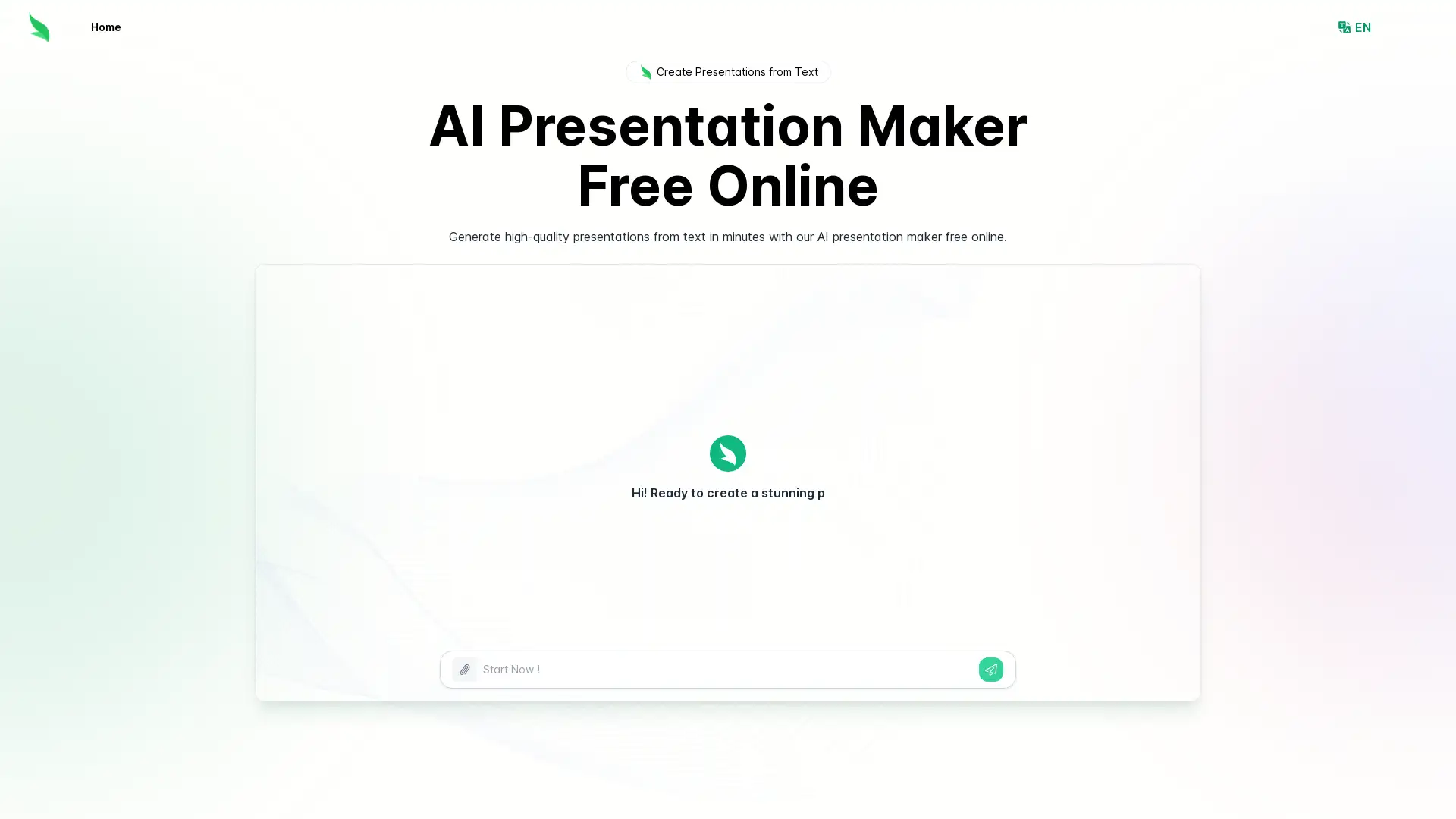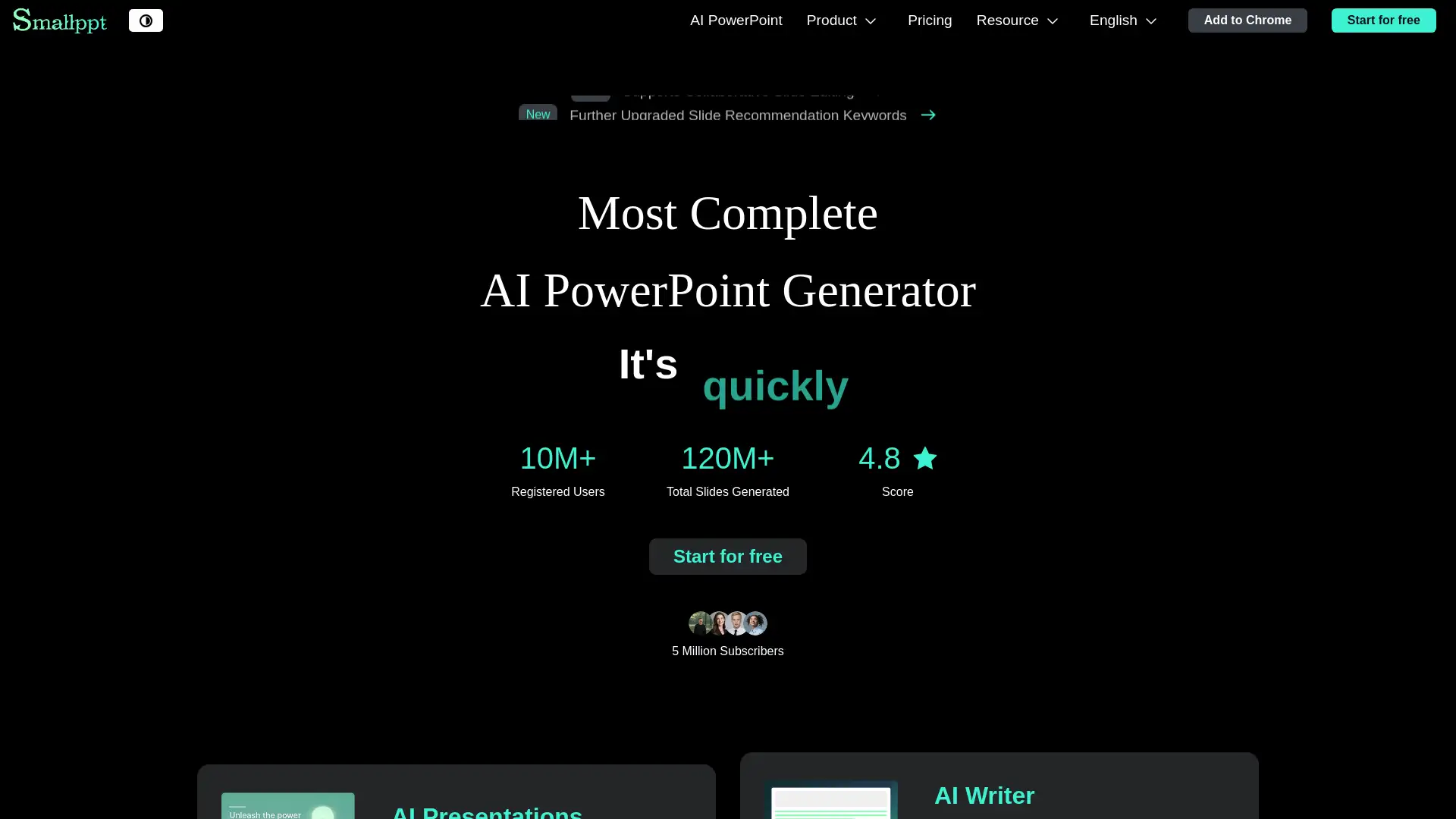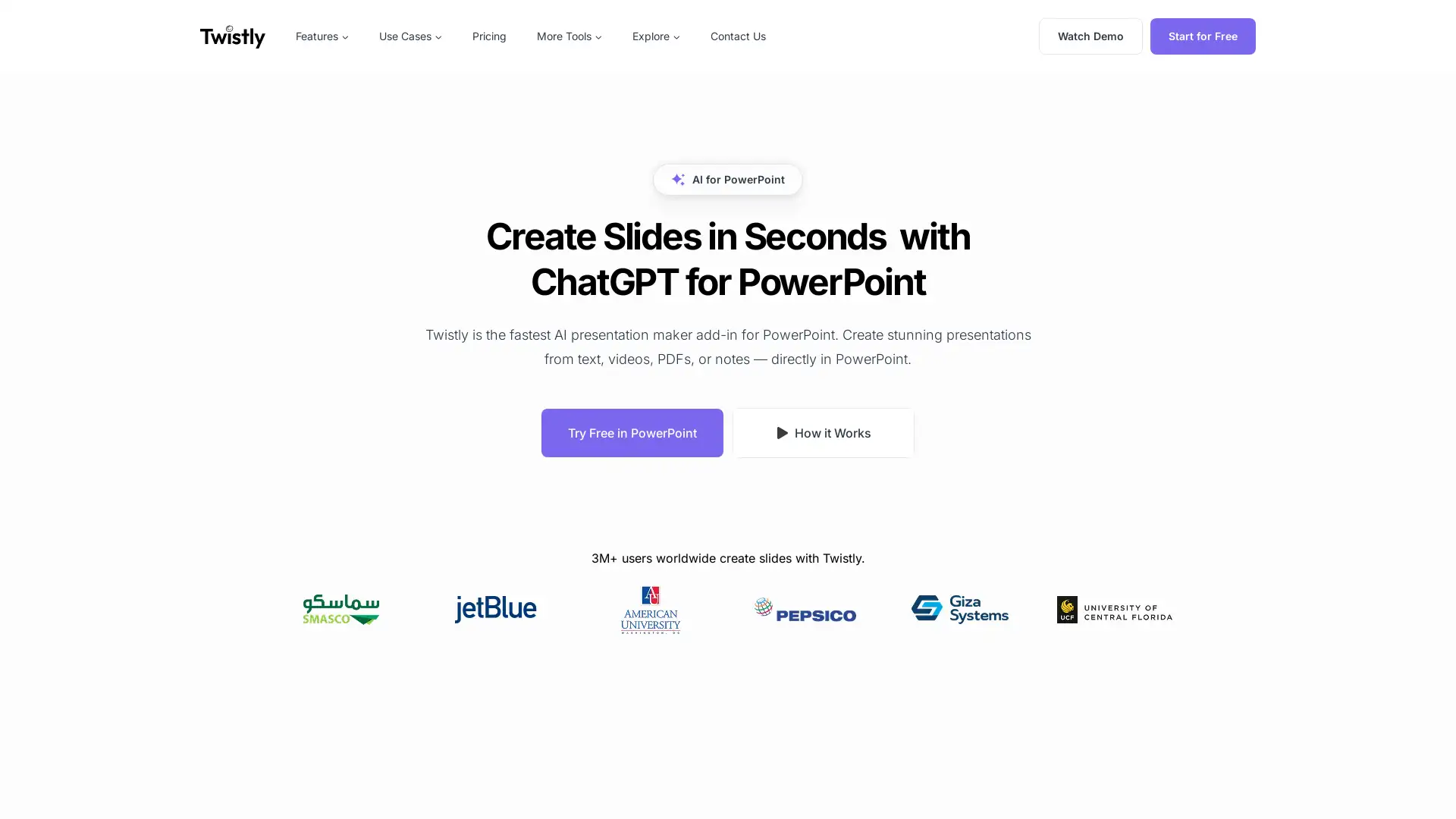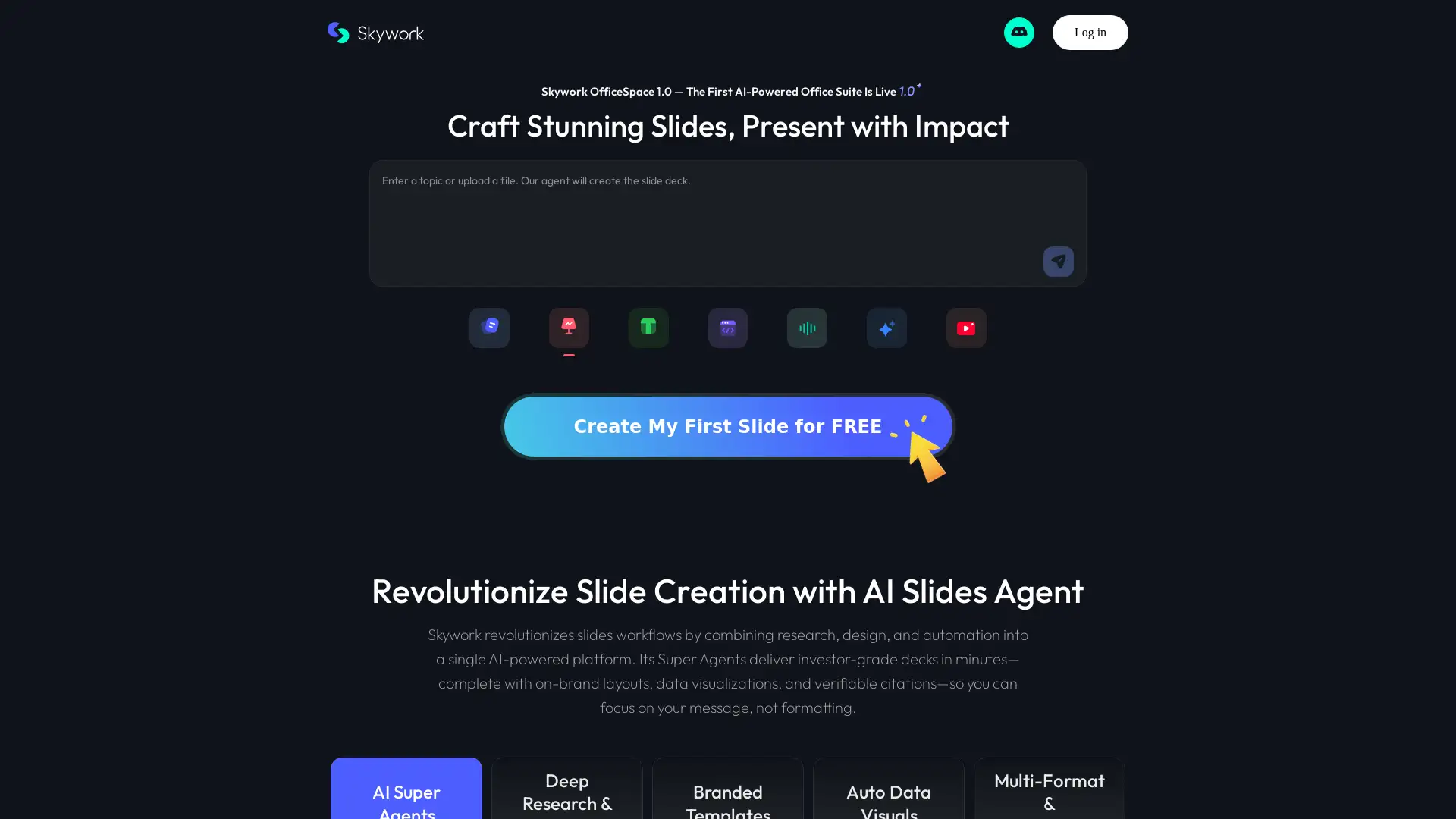Best 4 AI Tools for Slide Generation in 2025
Slides Bot, Smallppt, Twistly, Skywork Super Agent are among the best paid and free Slide Generation tools available.
Understanding Slide-Generation AI: A Practical Overview
AI tools for Slide Generation are software systems that use artificial intelligence (NLP, computer vision, template engines and sometimes multimodal models) to create, edit, and enhance presentation slides automatically. Designed specifically for converting ideas, text, data and images into polished slide decks, these tools speed up design, maintain brand consistency, and lower the skill barrier for producing professional presentations. They range from simple assistants that turn bullet points into layouts to advanced engines that generate visuals, speaker notes, charts, and animations. Many market examples market themselves with taglines like “AI-powered slides in minutes,” “AI-powered PowerPoint creation made simple and fast,” and “Turn ideas into slides with powerful AI tools,” which highlight speed, simplicity, and idea-to-slide transformation.
Key Capabilities That Define Slide-Generation AI
Slide-generation AI tools offer a layered set of capabilities that adapt from entry-level automation to deep customization. Core features commonly include: 1) Template and layout generation: automatic selection and populationAI tools for Slide Generation of slide templates based on content and purpose; 2) Natural language to slides: convert outlines, prompts or documents into slide titles, bullet lists, and speaker notes; 3) Visual generation & asset insertion: create or suggest images, icons, and backgrounds (including AI image generation or stock-image selection); 4) Data-driven visuals: auto-create charts, tables, infographics and update them from spreadsheets or live data; 5) Design optimization: color palettes, typography pairing, alignment fixes and accessibility checks to ensure readability and brand compliance; 6) Multi-language support: translate slides and adapt layout to different languages or right-to-left scripts; 7) Collaboration & versioning: multi-user editing, comments, and history tracking; 8) Export & compatibility: export to PowerPoint, PDF, Google Slides, and other formats, or provide embed codes; 9) Extensibility & automation: APIs, plugins, and scripting hooks for developers to integrate slide generation into workflows; 10) Security & compliance: user-level access controls, enterprise SSO, and data-handling policies. Special distinguishing features may include built-in web search to fetch up-to-date facts and images, slide-level generative image creation, automated speaker notes and rehearse modes, brand-kit enforcement, and adaptive templates that learn from user edits to improve suggestions.
Who Benefits Most from Slide-Generation AI
These tools serve a broad audience: 1) Non-designers and novices—people who need professional slides quickly without design skills; 2) Business professionals and executives—fast deck creation for reports, pitches, and meetings; 3) Educators and students—lesson slides, summaries and study decks; 4) Data analysts and researchers—automated charting and evidence-driven slides; 5) Marketers and product teams—brand-aligned collateral and pitch decks; 6) Presentation designers and agencies—speed up iteration and scale production; 7) Developers and integrators—who embed generation into apps via APIs or build custom plugins. Most tools include intuitive UIs so users without coding experience can generate, edit, and export slides. Power users and developers can take advantage of SDKs, APIs, custom templates, and automation hooks to create bespoke behaviors, integrate with data sources, or add enterprise workflow logic.
Practical Insights and Integration Tips
Slide-generation AI excels when paired with clear inputs: structured outlines, labeled data, and brand assets produce the best outputs. In sector-specific contexts—sales, education, scientific reporting, or investor relations—custom templates and domain vocabularies significantly improve relevance (e.g., financial templates for investor decks, lecture templates for academics). User-friendly interfaces reduce onboarding time while APIs and plugins allow seamless integration with CRMs, LMSs, data warehouses, and collaboration platforms. Consider building a small style-guide template and sample prompts so teams get consistent results. Finally, combine automatic generation with human review: use the AI to draft and accelerate production, then have subject-matter experts refine the content and validate data and claims.



